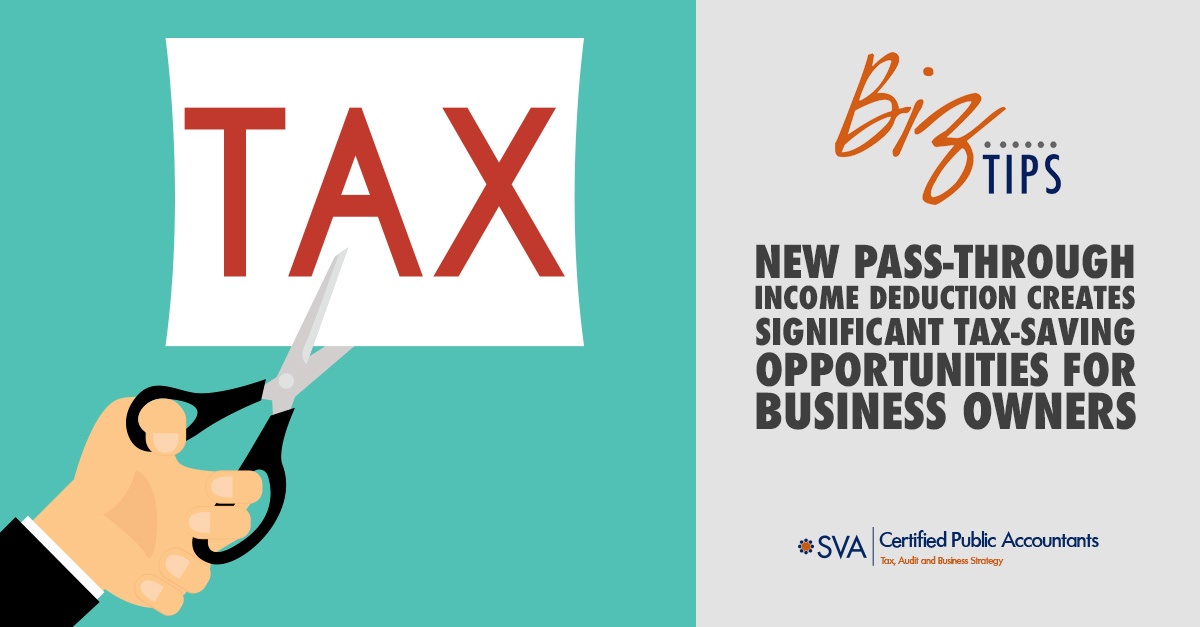Business owners should take notice of a substantial new tax deduction created by the recently enacted Tax Cuts and Jobs Act. The deduction can be taken in 2018 for qualified business income (QBI) that comes from a pass-through entity, which includes S corporations, LLCs, or sole proprietorships.
This tax-savings opportunity is a bit complex, so here is a brief overview of who qualifies and how the deduction works.
In general, this deduction is computed at 20% of qualified business income from the pass-through. QBI does not include capital gains/losses, dividends and interest income. It also does not include wages from an S corporation or guaranteed payments from an LLC. Additionally, the deduction cannot exceed 20% of the excess of your taxable income over net capital gain.
Qualifications
Specified services businesses do not qualify for this deduction, and there are also certain thresholds that a business needs to meet to qualify. However, if at the individual level, taxable income is below a certain amount even service businesses are eligible, and the entity does not need to meet any of the thresholds.
The income levels for this are below $157,500 for single taxpayers and below $315,000 for married filing jointly. After this, the deduction for service businesses fully phases out at $207,500 for single and $415,000 for joint returns.
Exclusions
Once the individual meets the income levels noted above, the entity needs to meet other requirements for the owner to get this deduction. The specified service businesses that do not qualify are those in the fields of health, law, consulting, athletics, financial or brokerage services, or where the principal asset is the reputation or skill of one or more employees or owners.
In addition, for taxpayers in non-service businesses above the thresholds noted, there is a limitation at the entity level on how much the deduction can be.
So the 20% of QBI deduction cannot exceed the greater of:
- 50% of your share of W-2 wages paid with respect to the qualified trade or business; or
- The SUM of
- a) 25% of your share of W-2 wages, PLUS
- b) 5% of the unadjusted basis immediately after acquisition of tangible depreciable property used in the business (including real property).
Again, the rules governing the new deduction are extremely complex. The bottom line? The deduction generally will not be available for high-income owners of most service partnerships.
However, owners of operating businesses and certain real estate investments may see a significant benefit. We expect the IRS to issue guidance for pass-through entities, especially regarding rules for the recharacterization of wages.


